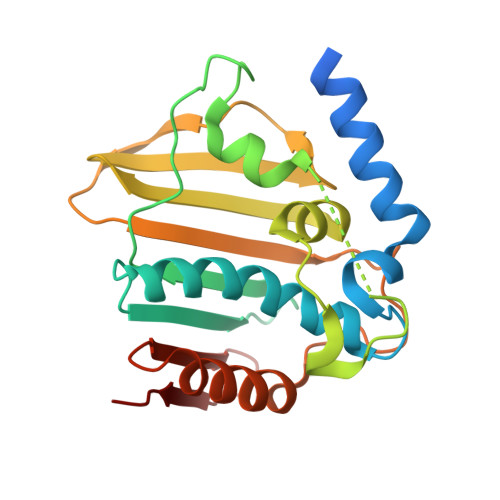Discovery and Optimization of Isoquinoline Ethyl Ureas as Antibacterial Agents.
Panchaud, P., Bruyere, T., Blumstein, A.C., Bur, D., Chambovey, A., Ertel, E.A., Gude, M., Hubschwerlen, C., Jacob, L., Kimmerlin, T., Pfeifer, T., Prade, L., Seiler, P., Ritz, D., Rueedi, G.(2017) J Med Chem 60: 3755-3775
- PubMed: 28406299
- DOI: https://doi.org/10.1021/acs.jmedchem.6b01834
- Primary Citation of Related Structures:
5MMN, 5MMO, 5MMP - PubMed Abstract:
Our strategy to combat resistant bacteria consisted of targeting the GyrB/ParE ATP-binding sites located on bacterial DNA gyrase and topoisomerase IV and not utilized by marketed antibiotics. Screening around the minimal ethyl urea binding motif led to the identification of isoquinoline ethyl urea 13 as a promising starting point for fragment evolution. The optimization was guided by structure-based design and focused on antibacterial activity in vitro and in vivo, culminating in the discovery of unprecedented substituents able to interact with conserved residues within the ATP-binding site. A detailed characterization of the lead compound highlighted the potential for treatment of the problematic fluoroquinolone-resistant MRSA, VRE, and S. pneumoniae, and the possibility to offer patients an intravenous-to-oral switch therapy was supported by the identification of a suitable prodrug concept. Eventually, hERG K-channel block was identified as the main limitation of this chemical series, and efforts toward its minimization are reported.
- Actelion Pharmaceuticals Ltd. , Gewerbestrasse 16, CH-4123 Allschwil, Switzerland.
Organizational Affiliation:

















